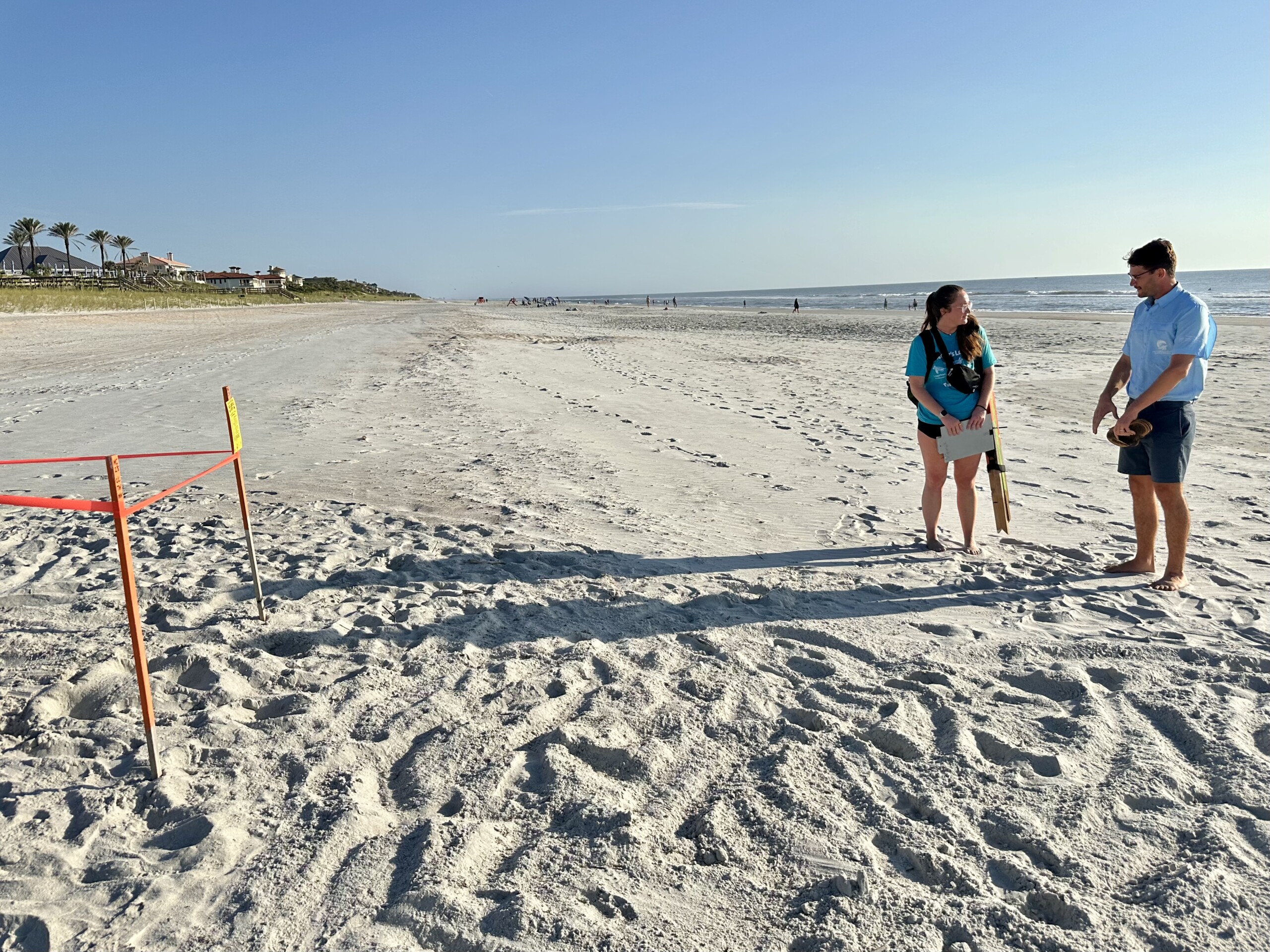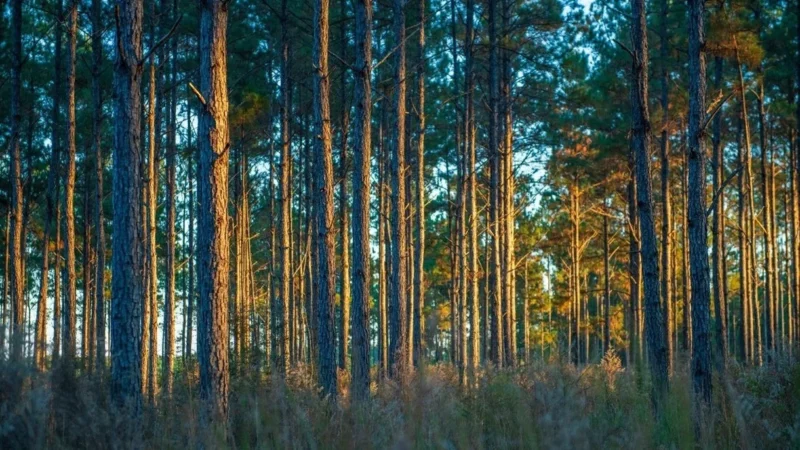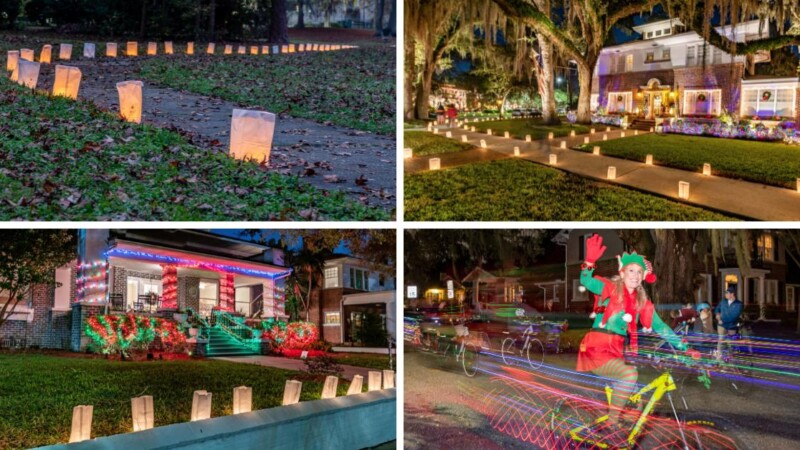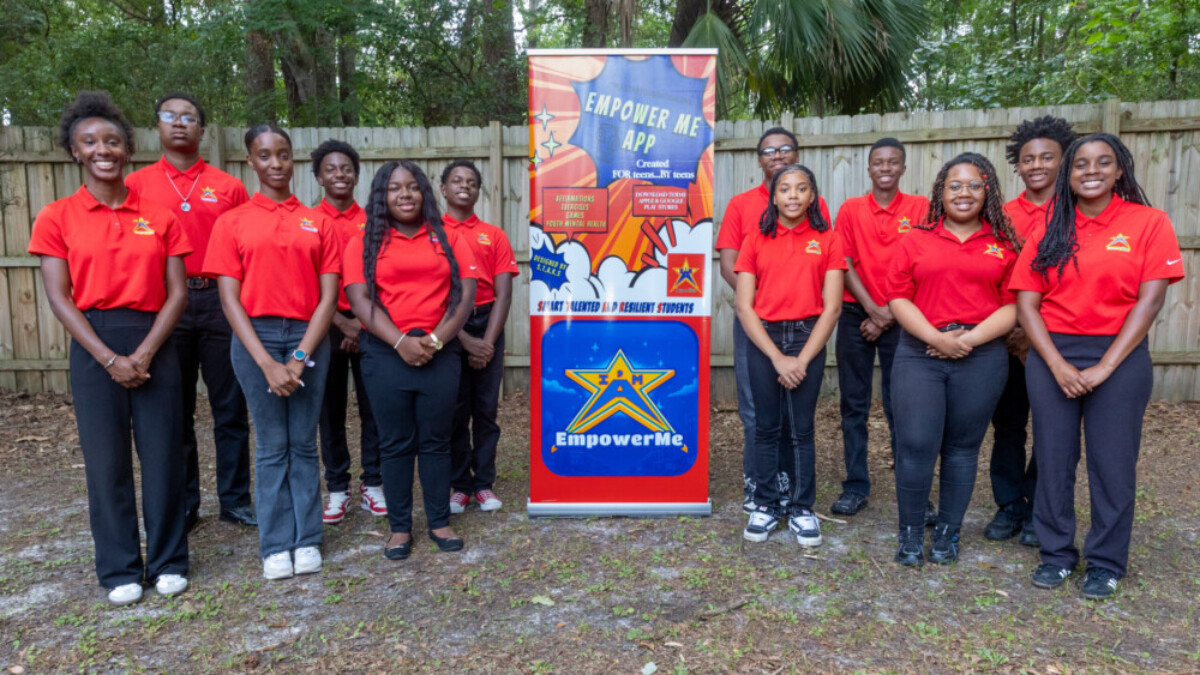Jacksonville University is launching a Sea Turtle Program in conjunction with an already well-established local turtle patrol program in St. Johns County.
Along a nearly 5-mile stretch of Ponte Vedra beach from Sawgrass Beach Club to the Guana Tolomato Matanzas National Estuarine Research Reserve, turtle nests are checked daily from mid April through October. Doing the monitoring are students like Emily Hoeflich, a master’s student who’s part of the new JU program with six students.
“You can tell which way she came to nest by looking at the patterns in the sand,” Hoeflich said. “There are these backward swish marks on either side that show that the sand was being pushed backwards, so that was her incoming crawl. She came up, nested, and then her outgrowing crawl was the same way, over here on the right, you can see those backward swish marks again, going towards the water.”
The students are led by Lucas Meers, director of the Jacksonville University Sea Turtle Program with the Marine Science Research Institute. He has spent years with the Mickler’s Landing Turtle Patrol helping to assess the nesting process that, for the common loggerhead turtle, takes one to two hours.
“She did her business; she laid her eggs,” Meers said. “Our team confirmed that it was a nest. We are participating in a study with the state to look at breeding-sex ratios — to understand if we have enough males versus females in the population.”
Meers began his conservation journey as a student at Jacksonville University’s Marine Science Research Institute, joining the Turtle Patrol as a volunteer after graduation. Over a decade, he became deeply involved in marine conservation and in 2021, became the lead coordinator of the Mickler’s Landing Turtle Patrol.
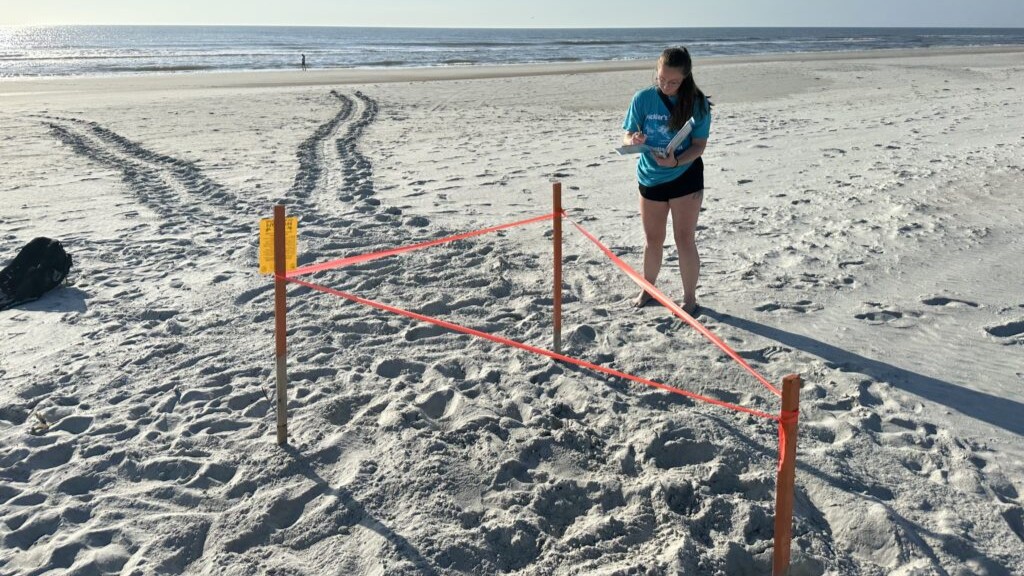
Meers is now overseeing students like Emily in their educational pursuits. On this mid-June morning, they found a loggerhead sea turtle nest, built overnight. Nesting loggerheads are listed as a threatened species.
It’s the 28th one they’ve found this year, along this section of beach. In a typical year, they’ll find about 120 turtle nests along the entire stretch. Florida is home to the world’s largest population of nesting loggerheads, green sea turtles and leatherbacks.
The privately funded JU program (within its Marine Science Research Institute) is partnering with the Mickler volunteer group. The students collecting data on nests are paired with veteran community volunteers.
Together, volunteers and students are out before sunrise to scan the sands for “new crawls” or signs of disturbed nests, recording their data on charts or a Florida Fish and Wildlife app. Nests are checked for impacts or changes, such as predation or washovers from high tides.
“I feel like I’m actually making an impact and the things I’m doing really matter,” Hoeflich said. “I know that the data I’m collecting is going to a greater purpose — whether it’s directly to a research project or if the data is involved in a bigger picture of tracking changes in our nesting turtle populations over time.”
Through research, education and community engagement, it’s a concerted effort to save a vital part of Florida’s ecosystem, the sea turtle.



